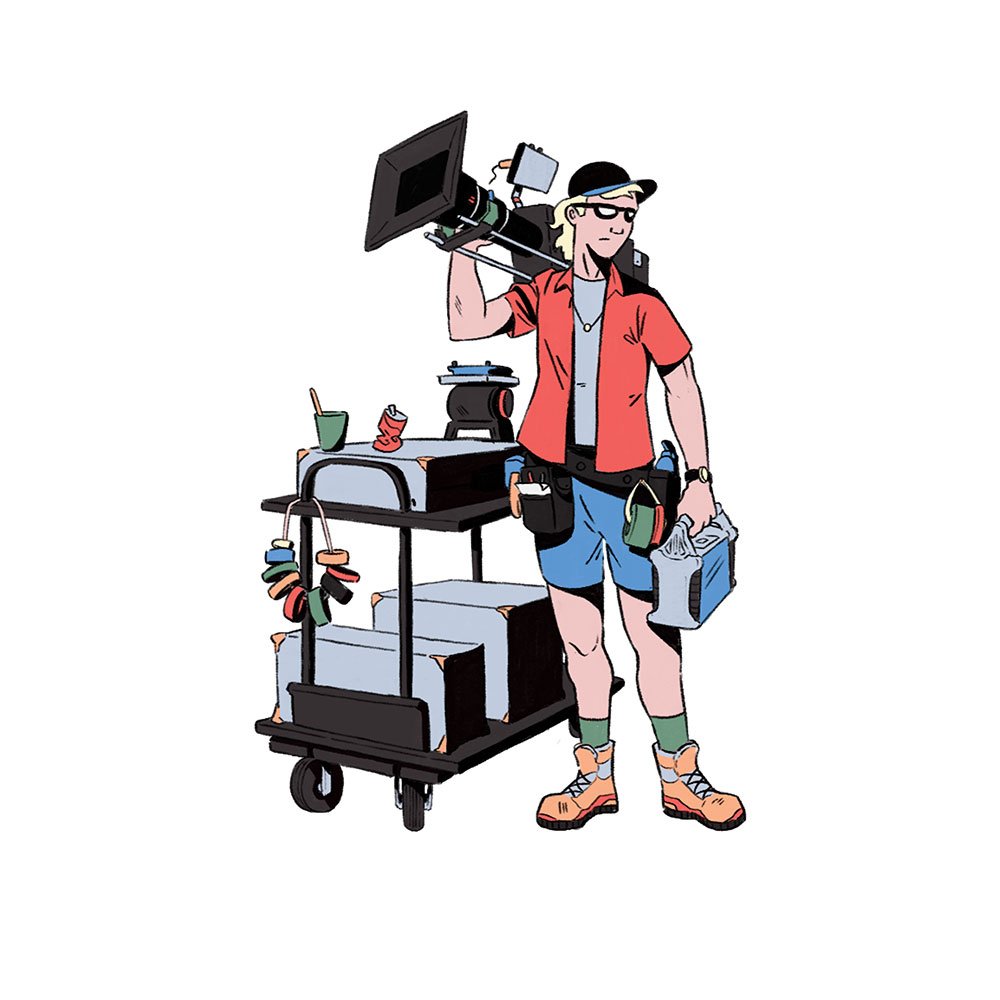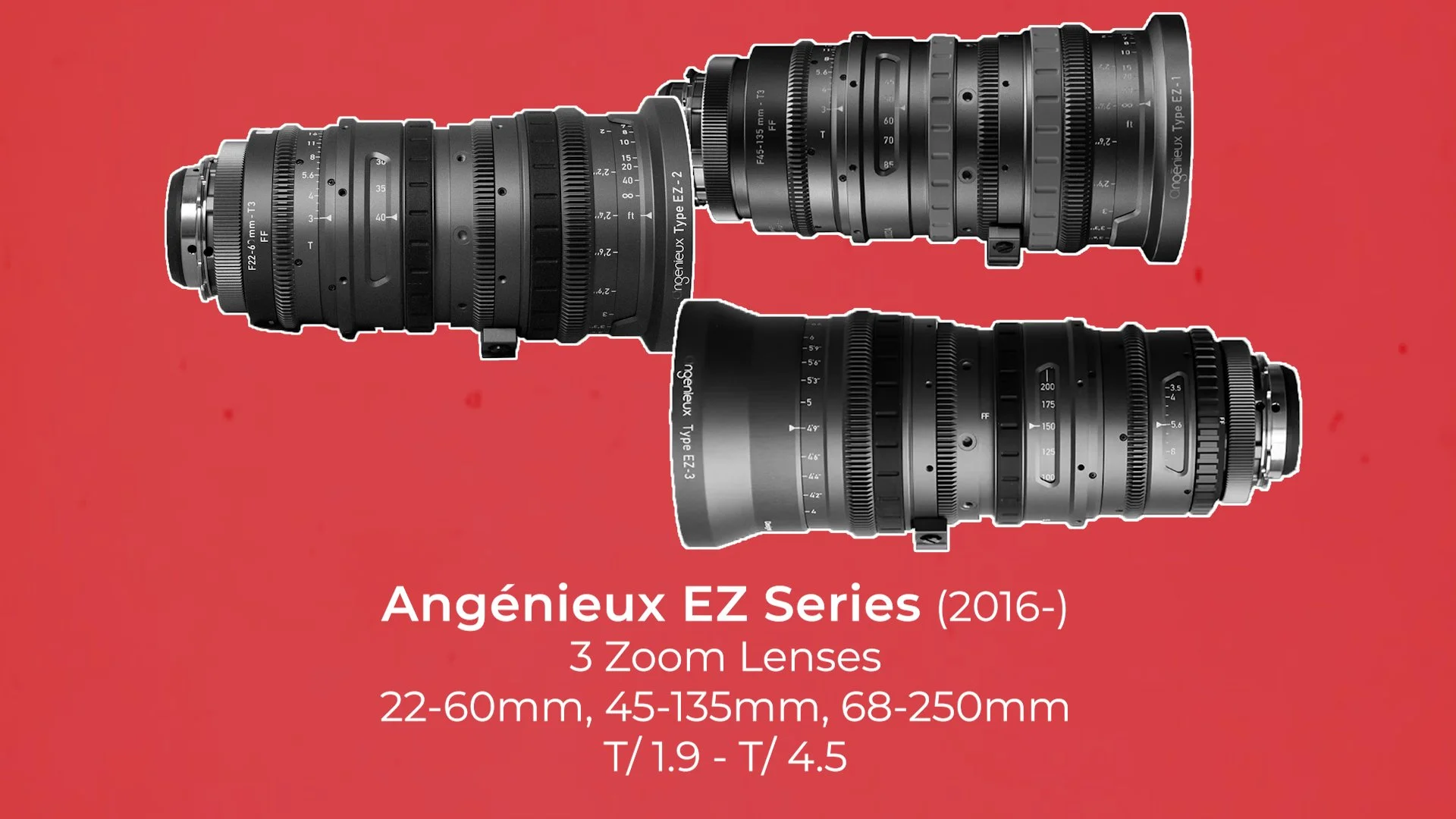The Most Popular Cinema Lenses (Part 7): IronGlass, Lomo, Angénieux, Zeiss
INTRODUCTION
Choosing cinema lenses is like an artist choosing a brush - it affects both how the image looks and how easy it is for the artist to paint with it.
In the latest addition of this series, let's look at four different sets of cinema lenses used in the film industry and examine both the look that they create as well as their practical and ergonomic capabilities.
IRONGLASS SOVIET REHOUSED LENSES
Since the explosion of large format sensor cameras in recent years, there’s been a bit of a scramble to find vintage cinema lenses with enough coverage to be able to shoot on these cameras without vignetting.
This is because the overwhelming majority of older cinema glass out there was designed for 35mm film, which is smaller than the capture area of modern full frame or large format cameras.
One very interesting set of large format vintage lenses are the Soviet Rehoused primes from Ironglass.
Rather than regular lenses where the components are manufactured and then put together by a company, rehousing is when the glass from an existing lens is taken, which has old or undesirable ergonomics that make them difficult to work with, and is placed within a modern lens housing with well calibrated focus and iris rings.
This glass dates as far back as the 1950s. They were produced as still photography lenses in the Soviet Union based on the optical formulas of old Carl Zeiss lenses, which gave them a sharpness and solid optical performance.
For example, the 20mm Mir-20M was based on the layout of the Carl Zeiss Jena Flektogon. Or, the well known 58mm Helios 44-2 was modelled on the Zeiss Biotar.
The redesigned Russian glass used to make the lens elements came with some additional funky characteristics like dreamy flares, swirly bokeh and a painterly texture.
This meant that although the centre of these lenses remained sharp, the focus on the edges would rapidly fall off and go soft in an almost anamorphic-like way. The bokeh swirls in a rounded pattern, making the little out of focus balls on the edges of the frame appear slanted and off kilter.
Ironglass has two versions of these rehoused lenses, with the newest MKIIs, which were used on Dune: Part II being far better. They come with improved close focus distances, a better focus system and universal focus gear positions - meaning that when changing to different focal lengths, the focus motor will not need to be adjusted or moved.
The full set covers seven different focal lengths from a 20mm up to a 135mm, with stops of T/3.6 for the wider lenses, faster T/2.1 stops for the medium focal lengths and T2.9 for the telephoto lens.
As I mentioned they can all cover full frame, large format and even the enormous Alexa 65 sensor, with the exception of the 20mm which is limited to large format coverage only.
LOMO SPHERICAL STANDARD SPEEDS
From one vintage Russian lens set to another, let's move onto the Lomo Standard Speeds. Not to be confused with the square and round front Lomo anamorphics, these are spherical lenses designed for Super 35 cameras.
As such they aren’t compatible with large format sensors, unless you want to crop in to avoid the vignette. These were produced from around the 1970s onward, but, unlike the Ironglass set, were designed as cinema lenses rather than still photography lenses.
They range in focal lengths from the widest 18mm T/3, through wide and medium T/2.3 lenses up to a 75mm. They also made some telephoto Lomos all the way up to a 300mm T/3.5 which are a bit rarer.
They are small and light little lenses which makes them nice to work with for handheld operation.
The Lomos have quite a heavy, dreamy vintage look to them. Highlights, especially white colours, are rendered with a glowing halo effect. Such as this shot, which I took on the 18mm. If you focus on the white shirt you’ll see it has a halation effect that gives off a dreamy glow.
When shot wide open they aren’t the sharpest lenses, however this does soften skin tones in a way that I find pleasing. Their flares are especially pretty and have a rounded, rainbow dispersion.
Overall they have a beautiful, soft, dreamy look, however not without some practical downsides.
The original lenses come in a very outdated housing, with minimal distance markings and, unusually, an iris ring on the front of the barrel, rather than the rear. Because the front of the lens turns to change the aperture, this means that these lenses cannot be used with a clip on mattebox that would clamp onto their fronts.
Instead you have to use a mattebox mounted onto the rods. This adds a bit more weight to the camera and makes it trickier for certain builds such as a gimbal, where you’d want to lose the bottom mounted plate with rods.
Of course, these issues would go away if you manage to find a nicely rehoused set.
Another downside is the lack of close focusing ability. This frame is the closest that you can get to a subject on a 75mm for example. This means that if you want to shoot any extreme close ups you’ll need to add a diopter filter in front of the lens to be able to focus closer to the subject.
ANGÉNIEUX EZ SERIES
Next, we’ll fast forward in time a bit and look at a series of lightweight modern zoom lenses - the Angénieux EZ-1, EZ-2 and EZ-3. These zooms were designed to slot into the market place between still photography lenses and high end cinema zooms, such as Angénieux’s Optimo range.
However, despite this placement, these clean looking, well designed lenses have seen a bunch of use on high budget jobs, in place of the Optimos, as well as on ENG style work or documentary shoots.
For instance, they’re a favourite of DP Dariusz Wolski, who favours their image quality and ease of use.
The EZ series were designed with an innovative interchangeable rear optics design, which allows the rear element to be exchanged between a Super 35 back and a full frame back - depending on what camera is being used and how much sensor coverage is required.
In super 35 mode, the EZ-1 is a 30-90mm, the EZ-2 is a 15-40mm and the EZ-3 is a 45-165mm. Giving filmmakers a wide angle zoom, a medium range focal distance, and a telephoto option. In full frame mode, their focal lengths change to 45-135mm, 22-60mm and 68-250mm - covering a similar field of view on large format cameras.
Like their other lightweight Optimo zooms they have a clean, sharp, cinematic look across the frame, as you would expect of most modern cinema lenses.
The image quality remains consistent across the zoom range, meaning slow zooms can be done in camera without being very noticeable.
They have a stop of T2.8-3 in full frame mode and T/1.9-2 in super 35 mode. Their front diameter is consistent across all zooms at 114mm, which makes it easier to interchange these lenses while maintaining the same mattebox setup - which saves time.
The EZ-1 and EZ-2 are also basically the same size and weight, which makes swapping between them easy.
Their mount can also be swapped between PL, EF, RF, or E mount depending on which camera it’s being used with. Overall they provide a very solid image, reliable performance, good build quality, and a high degree of flexibility on a range of different cameras.
ZEISS SUPREME PRIME
Ending with a modern set of fixed focal length lenses, we have the Zeiss Supreme Primes. The set offers a near full coverage of focal lengths, from a 15mm wide angle to a 200mm telephoto.
These primes can cover all sensors from super 35 to full frame and beyond - making them Zeiss’ newest flagship set of primes for large format cameras.
If you’re after an efficient set of spherical lenses with practical ergonomics and consistent performance, then these are the guys you want. They are clean across the frame and render details like skin textures with a razor sharpness - even when wide open.
Their fast stop of T1.5 means that they can be used in low light conditions, or be shot wide open to get a buttery smooth out of focus background.
Each focal length is also consistent, meaning the colour rendering will be the same no matter what lens you use, unlike some vintage glass where certain focal lengths may be warmer or cooler than others.
Most of the lenses have a 95mm front diameter and a standard positioning of iris and focus gears, making swinging between different lenses easy. However their wide angle and telephoto focal lengths like the 15mm, 18mm and 135mm and up come with a 114mm front diameter. So, if changing to these lenses a different mattebox back will have to be swapped to.
A great practical advantage to them is their metadata system. When you pop one of these lenses onto an LDS PL mount with a 12-pin Hirose connector, it’ll be able to supply the camera with information such as focal length, focus distance and T-stop. This information is precise and very useful for any VFX work in post production that requires these measurements.
This information will also be automatically sent through to Arri compatible wireless follow focus handsets. This means 1st ACs don’t need to manually calibrate lenses or manually mark up distances - speeding up lens changes on set.
All of these reasons, along with their exceptional build quality and small size, have contributed to them being a popular choice for DPs wanting a modern, fast set of cinema prime lenses.









